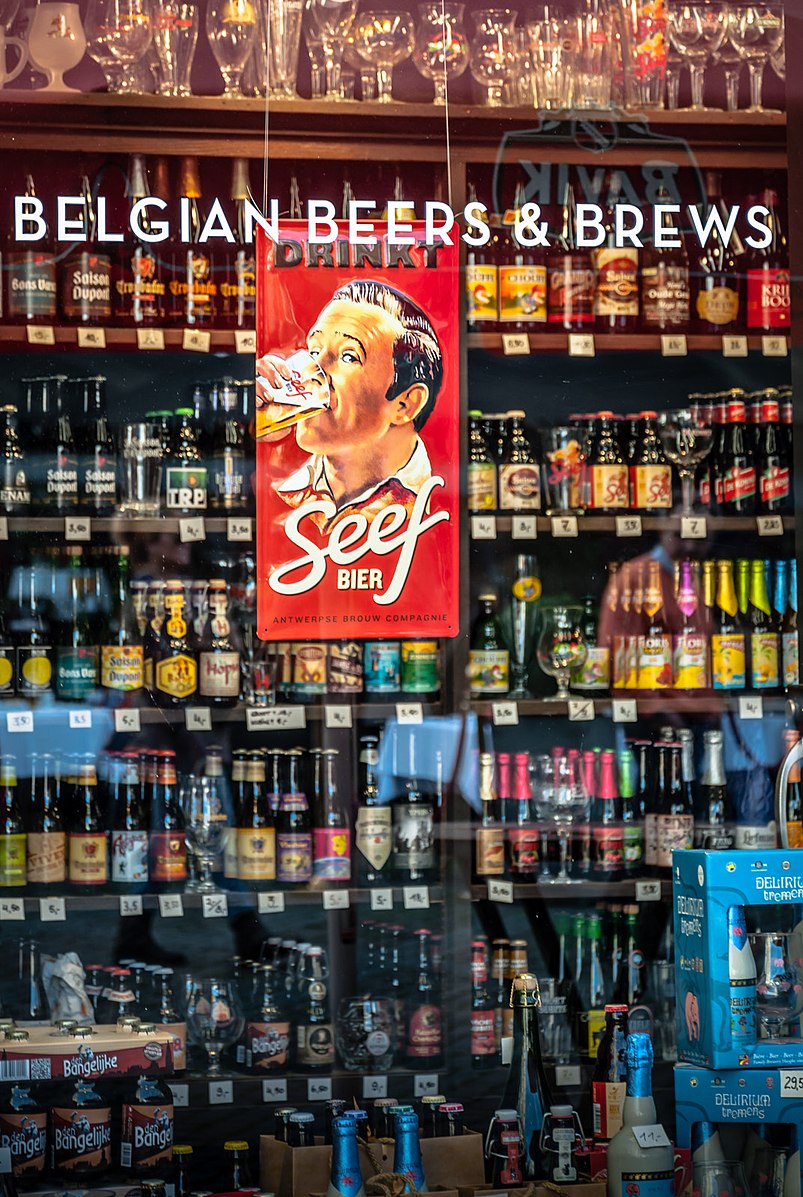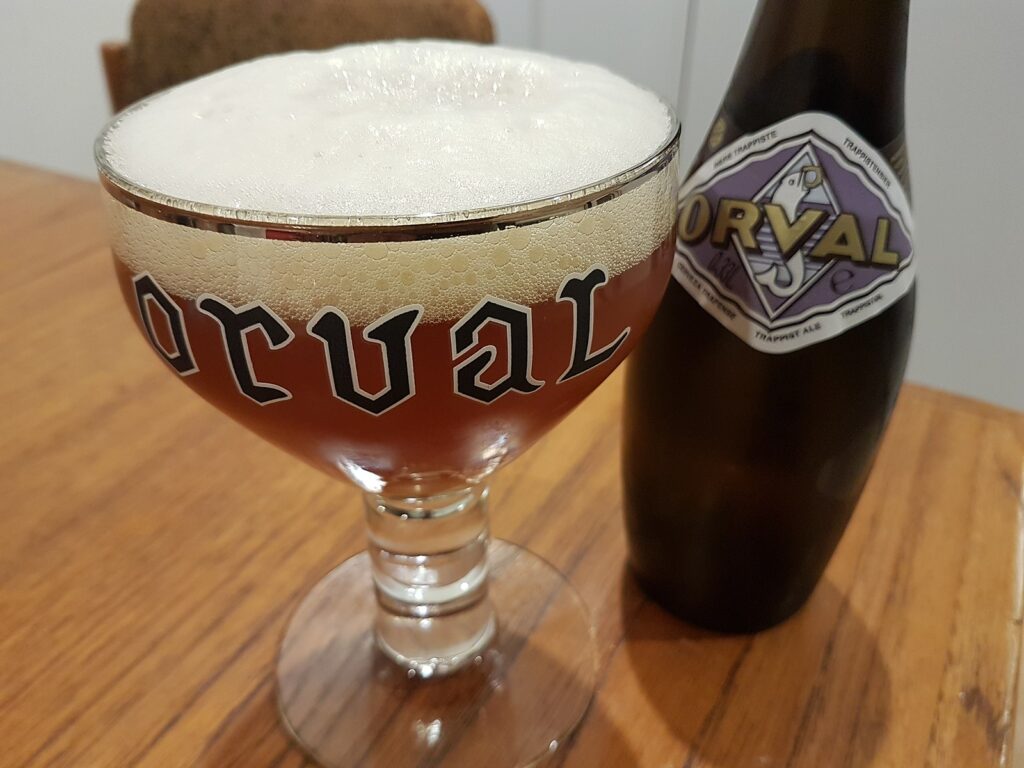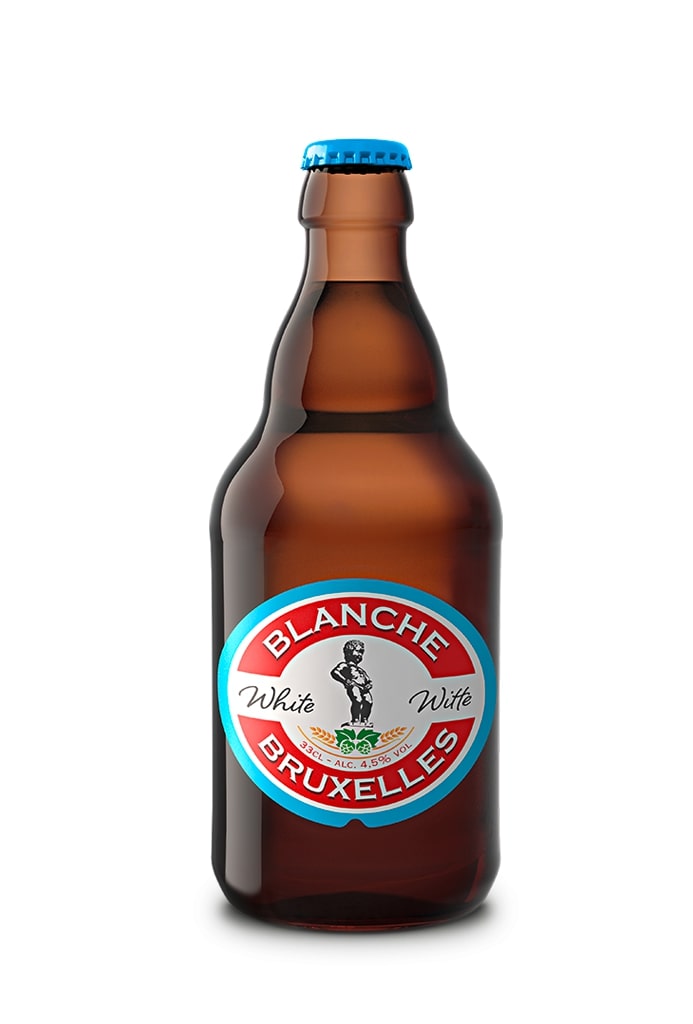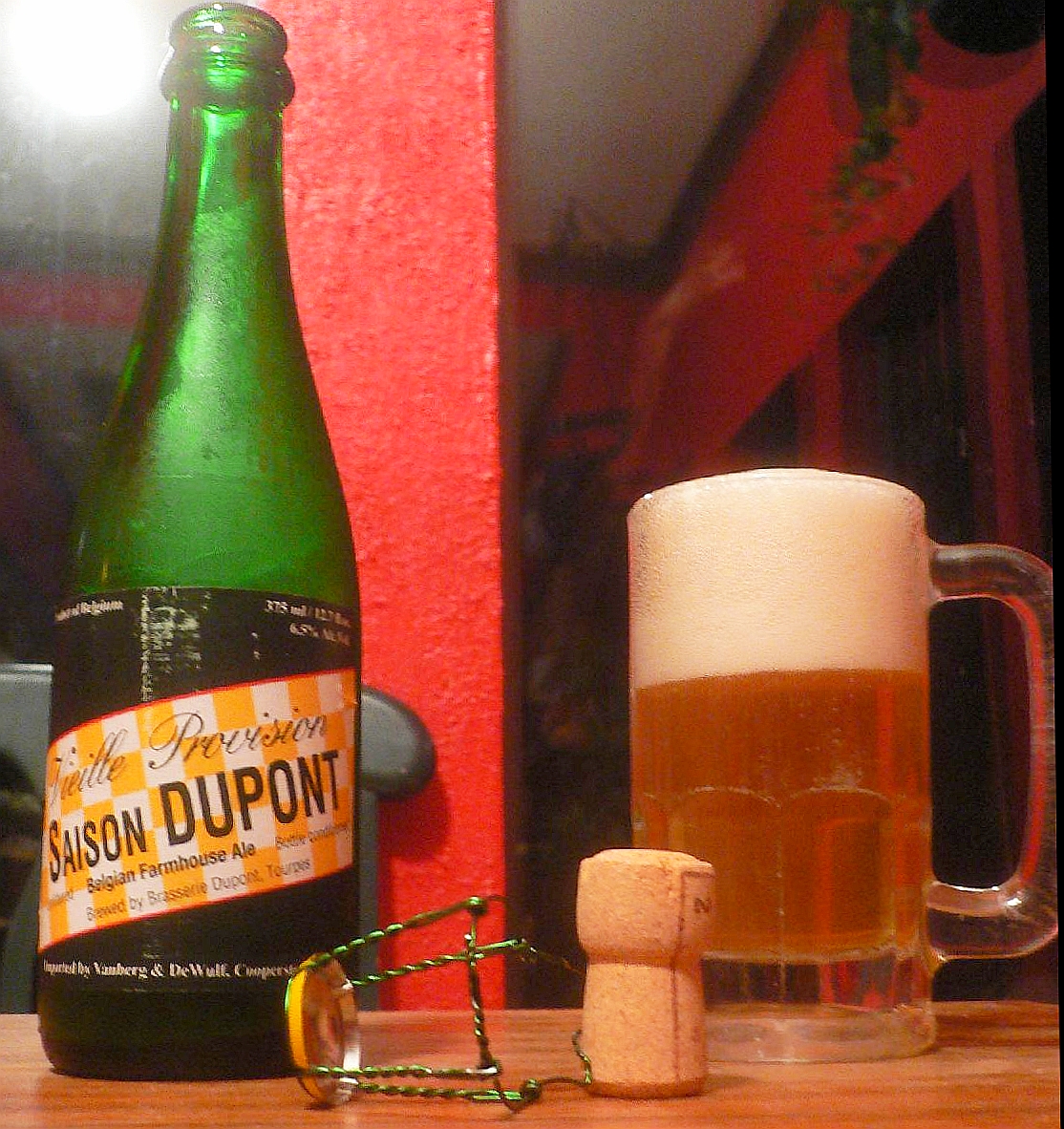For such a small country, those Belgians are certainly lucky people. A pint-sized country in the middle of Europe, recent estimates suggest over 700 types of beers are produced in Belgium. We’re not talking about your Stella Artois or other mass-produced-under-license lagers, but genuine Belgian-style ales.
For those not lucky enough to live in Belgium or visit there, don’t worry; many Belgian beer brands are now exported, some even to the US, so we American beer lovers can enjoy them, too.
If you don’t know your traditional lambic from a kriek beer, then read on as I list some of the best Belgian ales available in the US. To really sample a taste of Belgian beer culture, grab a pint of fresh mussels (yes, they serve those in pints, too!) and maybe some Belgian frites (skinny French fries with mayo) for that true Belgian beer experience.
Our 10 Favorite Belgian Ales Available In the US

There are so many beautiful beers produced by Belgian brewers that I could easily write a whole book just about the best Belgian ales. In fact, once I’ve finished this best-of list, I may well do that; the research for the book would certainly be rewarding. (I’m sure some adventurous beer nerds would buy the book, too!)
For now, let’s limit it to the top ten Belgian beers you may easily spot in your local craft ale hangout or beer depot. Some may even be on the shelves of the alcohol aisle in your local 7-11.
Orval Trappist Ale – Best Overall Belgian Ale
ABV: 6.9%

Brewed by the monks at the Abbaye d’Orval since 1931, Orval beer is a high-fermentation beer with distinctive fruit and bitter taste, making it a genuine reference for the exclusive world of Trappist beers. (Only ten Trappist breweries worldwide are allowed to use the label Authentic Trappist product.)
The unparalleled taste of Orval Trappist Ale is said to come from the high-quality water drawn from the nearby Mathilde fountain and the careful selection of hops and yeasts used in the brewing process.
With influence from the original Bavarian head brewer, the beer is flavored with hops of German and Slovenian origin. The beer’s aroma is pronounced, yet it maintains the right level of bitterness through English dry hopping methods.
The slightly hazy orange body comes from the mix of pale malts with a bit of caramel malt. With a dense ecru head, it’s a pleasure to behold a glass of this beer in its distinctive special glass, the Orval chalice.
Often called an adventurous beer, the addition of Brettanomyces (Brett) yeast at the bottling stage allows the beer to continue developing and ensures it never gets boring!
This two-stage fermentation combines the original fermentation with original Belgian yeast and wild yeast, followed by a bottle fermentation, which means the beer should be aged for some time before drinking. Every bottle of Orval has a bottling date on it.
A younger Orval beer is still quite sweet and hoppy with a bright, floral, grassy flavor. Over time, the ale gets a bit funkier and develops a dryer, more sparkling, and more complex profile thanks to the Brett yeast added at bottling. That same yeast can also give a sour note to the beer with typical Brett aromas often described as farmyard-like.
Widely regarded by many beer experts to be the best beer in the world, this complex beer is unique and immensely drinkable. It’s a must-try or bucket-list beer for every beer lover! Be warned; although the monks make as much of this beer as their lifestyle allows, demand always outstrips the supply – you will often find Orval sold out. (Even visitors to the Abbaye are only allowed a maximum of ten bottles per day!)
Westmalle Tripel – Best Tripel
ABV: 9.5%

It’s often thought Belgian Tripels get their name from the crosses that brewers used to mark their barrels in the days of mass illiteracy of the Middle Ages. The heaviest beers would always be chalked up with three crosses and be saved for special occasions.
A more likely theory suggests the name Tripel refers to the amount of ingredients used in a heavier beer, i.e., this strong blond ale would use three times the amount of ingredients compared with the original Westmalle Trappist Ale.
Although we may never know the exact origin of the word Tripel, we do know Westmalle was the first to label their beer Tripel, which inspired many of the other Belgian brewers to call their heaviest beers a Tripel.
A clear, straw yellow, or golden-colored Trappist Ale, Westmalle Tripel has an amazingly fruity aroma best described as ripe banana with a subtle hint of hops. Although originally introduced in 1934, it wasn’t until 1956 that brother Thomas (one of the monks and head brewer) introduced the delicate hop character the Westmalle Tripel is now renowned for.
Westmalle Tripel’s complex flavor profile is created using a slow brewing process and re-fermentation in the bottle with Belgian yeast. A full-bodied beer, it has a creamy mouthfeel, while the fruity and orangey flavors compliment the bitter notes with a long, pleasantly bitter, yet dry finish.
Often called the “mother of all tripels,” this strong blonde ale is a world classic, and if you only ever try one Tripel, make sure it’s the Westmalle Tripel.
NOTE: In the Cafe Trappisten, opposite the Abbey where the beer is brewed, locals often drink a blend of the Westmalle Tripel blonde beer and the darker Dubbel called a Trip-Trap. If you’re ever visiting that part of Belgium, you must pop by and give it a try. I’ve been told it’s a treat for the taste buds!
Oude Geuze Boon – Best Lambic Beer
ABV: 7%

Undoubtedly my favorite beer from Belgium, Oude Geuze Boon is one of the finest examples of the traditional 100% spontaneous fermentation Lambic style. The Boon family brewery has been producing this Geuze style of lambic since 1975 in the town of Lambeek, where Lambic beers get their name.
To moderate the sourness of their beers, Boon brewery only produces Lambic beers in the cooler months from October to April and uses a traditional turbid mash system. A grain bill of 60% malt, 40% wheat, and aged hops are fermented as they combust with the airborne bacteria and yeasts native to the Zenne Valley before the beer is 100% matured in oak barrels for one, two, and three years.
Geuze styles of lambic use a blend of these 1, 2, and 3-year aged lambics, which are then bottle conditioned for a secondary fermentation that creates extra flavors with a rich sparkle and produces a nice creamy head when poured.
Although a bottle of Oude Geuze Boon can be stored for up to 20 years, I personally find one never lasts that long! The longer it’s left to age, the more those flavors will develop with a gentle flavor and a soft and rounded texture.
The fresh nose of the beer is more fruity than spicy, with hints of citrus (especially grapefruit), apricot, and oak. This lambic’s complex, balanced character also has notes of vanilla and nuts with a long, dry, and intense finish.
If I could choose only one beer to drink for the rest of my life, it would be Oude Geuze Boon. And, at a not-high (by Belgian standards) ABV beer of 7%, it would be quite easy to put a few away every night despite the sour taste. Unfortunately, this beer is also one which, although available in the US, can be in limited supply – snap it up when you see it!
Blanche de Bruxelles – Best Wit
ABV: 4.5%

Historically, wit beers were produced by the Belgian farmers to show off their latest wheat harvest; the better the crop, the better beer you would get. Nowadays, wheat beers are produced all year round. Although Hoegaarden may be the most well-known Belgian wheat beer (not a bad one by any means), I recommend you try to hunt down this excellent beer from the family-owned Lefebvre brewery in Brussels.
Although the family has been brewing since 1876, the Blanche De Bruxelles ale was only added to their range of beers in 1989. A soft wheat beer at only 4.4% ABV, it’s very easy to drink. A dense, white head tops a golden-colored blond beer with a shimmering quality when poured into the glass.
The wheat shines through in this beer with hints of cilantro, orange peel, bread, and just a little spice. Some would describe it as “light and spunky.” I’d just call it a quaffable wheat beer ideal for those hot summer months in a beer garden.
Saison Dupont Farmhouse Ale – Best Saison
ABV: 6.5%

Brewed since 1844 at the Dupont farmhouse brewery, Saison Dupont truly is a genre-defining beer. Originally brewed to quench the thirst of seasonal farm workers, the beer would be brewed in the winter months and left to ferment for several months in wooden barrels before being served to thirsty workers in the summer.
A blonde ale with a complex flavor aroma and flavor profile, the standout aromas are of grapefruit and spice (cloves), with those aromas also present on the palate, where they combine with hints of malt.
As the beer warms, you get a buttery biscuit flavor from the malt, while the Belgian yeast and candied sugar evoke memories of those fruit candies you may have enjoyed as a child. The alcohol warmth offsets the floral dryness of the hops and fades to a smooth, gently sweet finish.
Although the Farmhouse Ale Saison Dupont is their most famous beer, Brasserie Dupont also makes a golden amber beer, Avec Les Bon Voeux, which, at the stronger 9.5 % ABV, blurs the lines between a Tripel and a Saison. If you like your beers a little stronger, it may be worth searching for this Dupont ale rather than the traditional flagship beer Saison Dupont.
Mort Subite Oude Kriek – Best Kriek (cherry beer)
ABV: 6.5%

Another popular Belgian beer style is the fruit sour beers, with Kriek (cherry) and Framboise (raspberry) lambic beers now found in many craft beer bars, sometimes even on draft. Often thought of as the “lady’s drink,” or for those who don’t traditionally like the taste of beer, they can sometimes be overpoweringly sweet.
The Morte Subite Oude Kriek from the De Keersmacker brewery is a traditional Kriek made with lambic beers to which real cherries have been added. With a tart, sour, fruity, yet dry flavor, it’s a refreshing beer that pairs well with most foods, especially pulled pork or suckling pig. It can also be a great end-of-the-night beer when you just can’t stomach too many more malty flavors.
Thanks to a collaboration with the worldwide brewing conglomerate Heineken, this beer is becoming more common on draft here in the US. But don’t worry, it’s still exclusively produced in Belgium near Brussels by a Lambic producer.
Troubadour Magma – Best Belgian ‘IPA’
ABV: 9%

Although the words Belgian and IPA don’t seem to go together very often, the guys at the Musketeer Brewery have decided to take their beers in a different direction. The result is a more hop-forward type of beer, especially with the Magma ale, often referred to as a Tripel/IPA hybrid beer.
Troubadour Magma has those typical fruit aromas you would expect from an IPA, combining exotic fruits like passion fruit and mango with the more traditional citrus, all complemented by the fruity esters of the yeast, including green apple and pineapple.
The biscuit-like malt flavor may also remind you of a typical IPA, but this beer’s body and the alcoholic bite of 9% ABV definitely remind you it’s more of a Tripel beer from Belgium.
Dry-hopped with American hops, the fruity aromas hit you before you even start drinking this beer. With an orange and copper color, this aromatic beer with an IBU of 45 is bitter, yet slightly sweet. Tripel and IPA seem to be a marriage made in heaven, or at least Belgium, a place called Heaven for beer lovers.
La Chouffe Bière Blonde D’Ardenne – Best Strong Pale Ale
ABV: 8%

No list of the best Belgian ales would be complete without a mention of the world-famous “Gnome on the bottle” La Chouffe Biere Blonde from the Ardennes region of Belgium. You can find this distinctive little fellow in the fridges and coolers of almost every Belgian bar, restaurant, or craft beer bar that sells Belgian ales worldwide.
This golden beer with a light taste of hops was the very first beer to come out of the Achouffe brewery vats over 40 years ago. Despite its higher alcohol content, it’s surprisingly drinkable, with some citrus notes to the aroma, along with notes of peach, banana, and just a hint of cardamom.
Fresh cilantro, those fruity esters, and honeyed malt give the beer a slightly hoppy taste. Just be careful; this popular beer is so easy to drink you will forget about the higher alcohol content of 8%. Don’t say you haven’t been warned!
Duvel – Best Mass produced Belgian Ale
ABV: 8.5%

The world-famous Duvel is another Belgian ale you are more likely to have come across in your local bar or even the nearest 7-11 alcohol aisles.
Although it was originally brewed by a small family-controlled farmhouse brewery in 1871, the Moorgat Brewery is now a massive Belgian brewing conglomerate that exports its Duvel and other brands it has acquired to over 40 countries worldwide. They can’t really be considered a smaller brewery anymore and have even bought many of Belgium’s artisanal breweries in recent years.
Duvel Golden Ale has a long maturation period of 90 days, which gives it a more refined flavor and extra taste. Golden-colored with a huge head when poured correctly, Duvel has a smooth mouthfeel. You can’t help but notice the aromas of citrus, apples, hops, and yeast before you even take the first sip. Even more so, the aromas keep developing as you continue to drink the beer.
Subtle bitterness and hop flavors are punctuated by the fruity esters of the Belgian yeast. Duvel combines the crisp lightness and effervescence of a quality Pilsner with a Tripel’s complexity and high alcohol percentage.
Duvel is one of the few major brewery-produced beers in the world that proves you can still produce excellent beer on a large scale. Duvel is a beer that goes down smoothly, far too smooth for its 8.5% alcohol by volume content.
XX Bitter – Best Hoppy Belgian Ale
ABV: 6%

I know many of you hop heads out there demand something hoppier when looking for your next beer. De Ranke brewery has been diverging from traditional Belgian brewing traditions and focusing on more hop-forward and bitter beers.
XX Bitter is a perfect example of the use of hops to give a beer more character without making it too harsh or undrinkable. A Belgian Pale Ale, this beer is excessively hopped with Belgian Brewers Gold and Hallertau Mittelfrueh whole-leaf Belgian hops. Although labeled as bitter, I would argue it’s more of an IPA but with a distinctive Belgian farmhouse ale taste to it.
A rustic graininess subtly compliments the floral, hoppy profile. But, if you are also looking for sophistication, this beer has plenty of that, too, with light lemon and grapefruit hints followed by a long dry aftertaste. An almost meringue-like dense white foam sits atop the light amber body of the beer, which leaves a sticky lacing along the glass as you gently quaff the brew.
Easy to drink with friends without thinking about it too much, XX Bitter is a refreshing brew. And, with a lower ABV of 6.2% than most Belgian beers, it could almost be considered at the top end of the session beers range. Perfect for a sunny afternoon in the beer garden of your local bar, or better still, sitting at the side of a river in Belgium (you know you want to go there now!)
Final Thought on the Best Belgian Ales
Wow, what a journey! It seems like almost every Belgian ale has a story to tell, and we have not even scratched the surface. For a country that is not much bigger than Wales in the UK and has a population smaller than Cuba, they certainly have a wide choice when it comes to beers.
There are more breweries in the US state of Oregon than in the whole of Belgium, with Belgian beer only accounting for 1% of the world’s beer production. So what’s the big fuss about?
Without a doubt, Belgium has the greatest diversity of original beer styles and an unrivaled history of brewing traditions embedded in the heart of every town, village, and even the monasteries across the country.
Most beer experts, writers, and journalists would agree Belgium is the best country in the world for beer. I’ve certainly enjoyed my few trips there. I even met old Frank Boon of the Boon brewery on one trip. He graciously gave me a 10-year-old bottle of his Oude Geuze Boon (and yes, it was incredibly sour but gorgeous). I don’t think I could have kept it for ten years without opening it!
If you’re still with us, and I hope you are, I also hope you have enjoyed this review of ten of the best Belgian ales available in the United States today. Let me know which of your favorites I may have missed, and I’m sure there’ll be plenty. Maybe that book I was promising to write isn’t such a bad idea after all, or we could simply do a best Belgian Ales Part 2 – tell me what you think!

